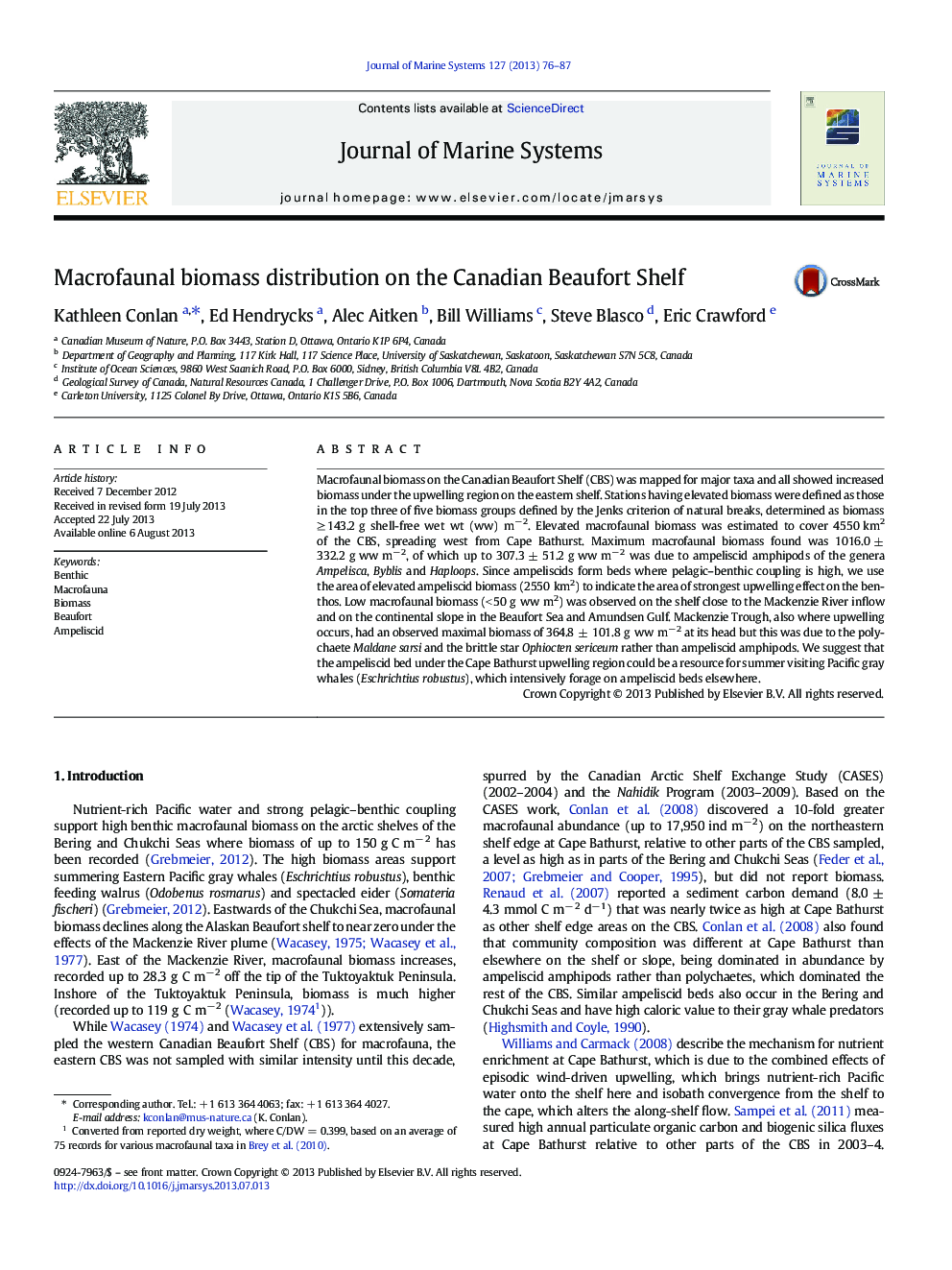| کد مقاله | کد نشریه | سال انتشار | مقاله انگلیسی | نسخه تمام متن |
|---|---|---|---|---|
| 4548084 | 1627302 | 2013 | 12 صفحه PDF | دانلود رایگان |

• Macrofaunal biomass was mapped for the Canadian Beaufort Shelf (CBS) and Amundsen Gulf over 2002-9.
• Biomass ranged from zero near the Mackenzie River to 1016.0 ± 332.2 g shell-free wet wt m-2 on the eastern CBS.
• An estimated 4550 km2 of the eastern CBS had elevated biomass, attributed to the effects of wind-driven upwelling.
• A 2550 km2 ampeliscid amphipod bed indicated the area of strongest upwelling effect.
• This ampeliscid bed could be a resource for Pacific gray whales which intensively forage on these beds elsewhere.
Macrofaunal biomass on the Canadian Beaufort Shelf (CBS) was mapped for major taxa and all showed increased biomass under the upwelling region on the eastern shelf. Stations having elevated biomass were defined as those in the top three of five biomass groups defined by the Jenks criterion of natural breaks, determined as biomass ≥ 143.2 g shell-free wet wt (ww) m− 2. Elevated macrofaunal biomass was estimated to cover 4550 km2 of the CBS, spreading west from Cape Bathurst. Maximum macrofaunal biomass found was 1016.0 ± 332.2 g ww m− 2, of which up to 307.3 ± 51.2 g ww m− 2 was due to ampeliscid amphipods of the genera Ampelisca, Byblis and Haploops. Since ampeliscids form beds where pelagic–benthic coupling is high, we use the area of elevated ampeliscid biomass (2550 km2) to indicate the area of strongest upwelling effect on the benthos. Low macrofaunal biomass (< 50 g ww m2) was observed on the shelf close to the Mackenzie River inflow and on the continental slope in the Beaufort Sea and Amundsen Gulf. Mackenzie Trough, also where upwelling occurs, had an observed maximal biomass of 364.8 ± 101.8 g ww m− 2 at its head but this was due to the polychaete Maldane sarsi and the brittle star Ophiocten sericeum rather than ampeliscid amphipods. We suggest that the ampeliscid bed under the Cape Bathurst upwelling region could be a resource for summer visiting Pacific gray whales (Eschrichtius robustus), which intensively forage on ampeliscid beds elsewhere.
Journal: Journal of Marine Systems - Volume 127, November 2013, Pages 76–87